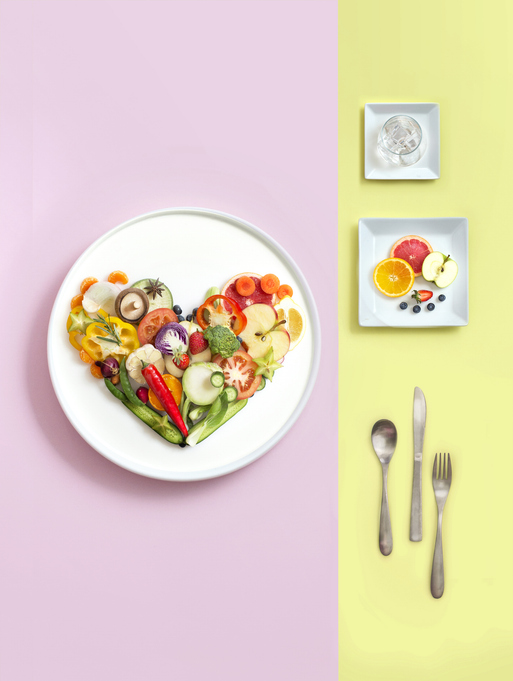Let’s Keep This Simple!
Nutrition doesn’t need to be complicated or confusing. Despite all the diet trends and conflicting advice out there, eating well actually boils down to some pretty straightforward principles. Let’s break it down in plain English, no fancy nutrition degree required!
The Core Principles of Healthy Eating
Eat Mostly Real, Whole Foods
Focus on foods that your great-grandparents would recognise:
- Fruits and vegetables – All colours, all types, fresh, frozen or tinned
- Proteins – Meat, fish, eggs, tofu, beans, lentils
- Whole grains – Brown rice, oats, quinoa, wholemeal bread
- Healthy fats – Olive oil, avocados, nuts, seeds
- Dairy or alternatives – Milk, yoghurt, cheese or plant-based versions
These foods provide the nutrients your body actually needs without the extra stuff it doesn’t.
The Plate Method (No Measuring!)
A simple visual guide for balanced meals:
- ½ your plate: Vegetables and fruits (more veg than fruit)
- ¼ your plate: Quality protein
- ¼ your plate: Whole grains or starchy veg
- A thumb-sized portion: Healthy fats
This approach works for most meals and means no counting or weighing food!
Stay Hydrated
Water is your body’s favourite drink! Aim for:
- 6-8 glasses daily (about 1.5-2 litres)
- More when exercising or on hot days
- Herbal teas count too!
Not sure if you’re drinking enough? Check your wee – if it’s pale yellow, you’re doing great!
Beyond the Basics: Some Handy Guidelines
Eat the Rainbow
Different coloured fruits and veg contain different nutrients, so variety matters:
- Red (tomatoes, strawberries): Heart health
- Orange/Yellow (carrots, peppers): Immune support
- Green (broccoli, spinach): Cell health, digestion
- Blue/Purple (blueberries, aubergine): Brain health
- White (cauliflower, garlic): Immune support
Try to include at least 3 different colours in every meal!

Protein Portions Made Easy
Getting enough protein helps with satiety, muscle repair and overall health. Aim for a portion about the size of:
- Your palm for meat, fish, tofu
- Your cupped hand for beans, lentils, chickpeas
- 2 eggs
- A small handful of nuts or seeds
Healthy Carbs vs. Less Healthy Carbs
Carbs aren’t the enemy! Choose mostly:
- Wholegrains – Brown rice, wholemeal bread, oats
- Starchy vegetables – Sweet potatoes, squash, corn
- Beans and pulses – Lentils, chickpeas, kidney beans
Limit (but don’t obsess over):
- White bread, white rice, regular pasta
- Sugary cereals
- Biscuits, cakes, sweets
Fat Facts Made Simple
We need fats for health! Focus on:
- Olive oil for cooking and dressings
- Avocados for sandwiches and salads
- Nuts and seeds for snacking
- Oily fish like salmon, mackerel, sardines
These provide heart-healthy fats that your body loves.
Real-Life Strategies That Actually Work
The 80/20 Approach
Aim for nutritious choices about 80% of the time, and don’t worry about the other 20%. This means:
- No “forbidden foods” or guilt
- Room for birthday cake, pub meals and takeaways
- Sustainable eating patterns you can maintain for life
Make Vegetables Taste Amazing
If you think veg is boring, try:
- Roasting with a bit of olive oil and herbs
- Adding garlic, chilli or lemon
- Experimenting with different cooking methods
- Using herbs and spices instead of just salt
Meal Prep Without the Hassle
You don’t need 20 matching containers and Sunday spent cooking:
- Chop extra veg when you’re already cutting them
- Cook double portions and freeze half
- Keep tins of beans, frozen veg and eggs on hand for quick meals
- Prepare components rather than full meals (e.g., batch of roasted veg, pot of rice)
Smart Swaps, Not Deprivation
Small tweaks add up:
- Greek yoghurt instead of sour cream
- Fruit and nut butter instead of jam on toast
- Sparkling water with lime instead of fizzy drinks
- Homemade popcorn instead of crisps
What About All The Diet Trends?
Whether it’s keto, paleo, intermittent fasting or plant-based eating, most successful eating patterns share common elements:
- More whole foods
- More vegetables
- Fewer ultra-processed foods
- Appropriate portions
The “best” diet is one that:
- You enjoy eating
- You can maintain long-term
- Provides nutrients your body needs
- Fits your lifestyle and preferences
In a Nutshell
Healthy eating doesn’t require expensive superfoods, complicated rules or perfect choices. Focus on more whole foods, plenty of plants, adequate protein, and a relaxed, sustainable approach.
Remember, one meal doesn’t make or break your health – it’s your overall pattern that counts. Start with small changes, find nutritious foods you genuinely enjoy, and build consistent habits that work for YOUR life.
Happy eating! 🥦🍎🥚
